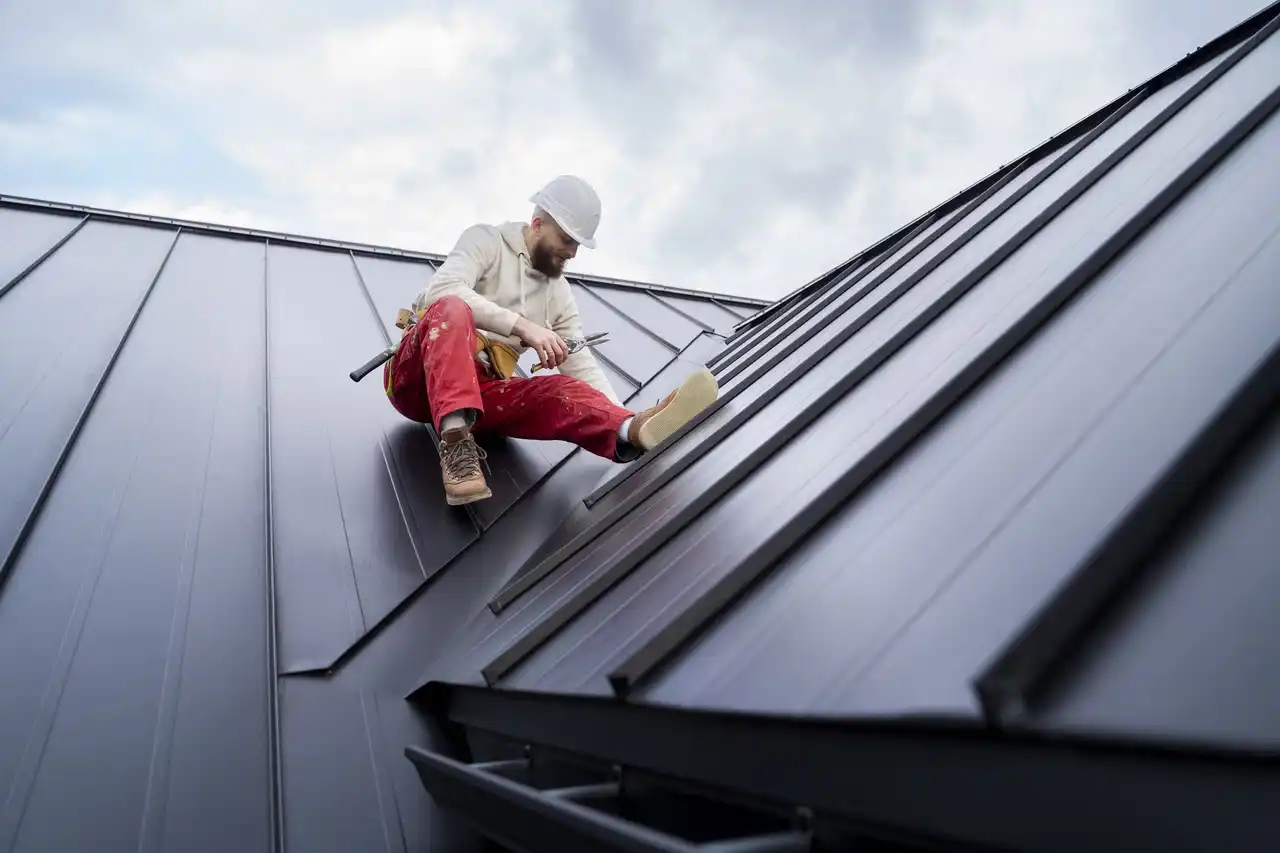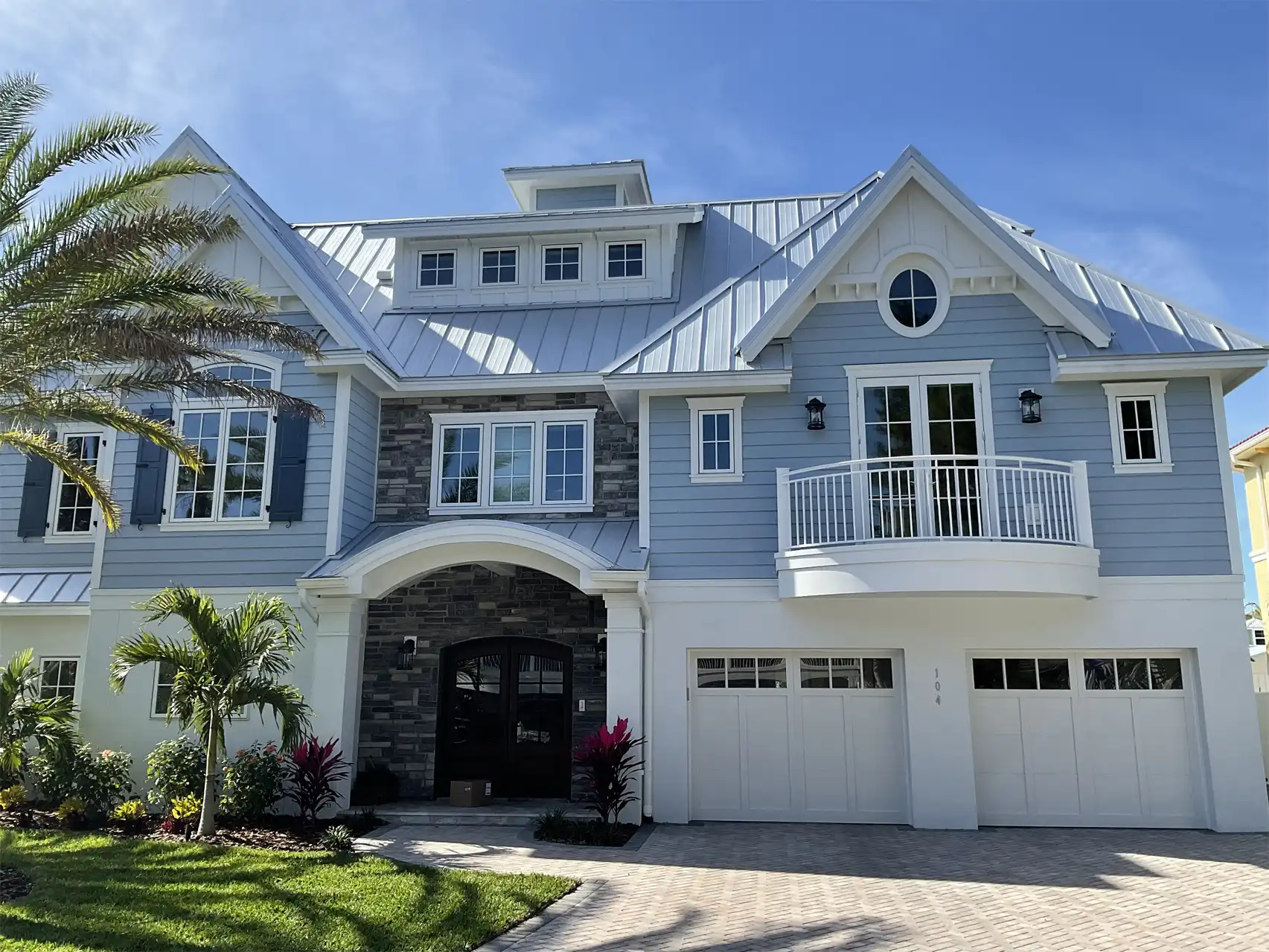Our Roofing Work

Metal Roofs and Lightning on Florida’s Suncoast
Florida is known as the lightning capital of the United States, and homeowners on the Suncoast often ask whether a metal roof increases their risk of being struck. The short answer is no, metal roofing does not attract lightning. In fact, it can actually make your home safer if a strike does occur.
Lightning is drawn to the highest point in an area, regardless of the material. A metal roof does not increase the chance of a strike compared to asphalt shingles, tile, or any other roofing system. The real difference is how the material responds after a strike. Metal is non-combustible, which means it will not catch fire the way wood shakes or even shingles backed by plywood might. Instead, it safely dissipates the energy across the surface of the roof.

Another benefit is durability. If lightning does strike, asphalt shingles may blister, crack, or loosen, leaving the roof vulnerable to leaks. A properly installed metal panel system can withstand the energy and remain intact, often showing little to no visible damage. For homeowners in storm-prone areas, this is a major advantage.
Paired with a professionally designed lightning protection system, a metal roof provides one of the safest options available. Not only does it help protect against fire, but it also offers the same benefits of longevity, hurricane resistance, and energy efficiency that make it a smart investment on the Suncoast.
TL;DR: A metal roof will not increase the risk of lightning strikes—but if lightning does hit, it provides superior protection compared to shingles. For Florida homeowners, that peace of mind is just one more reason metal roofing is the right choice.

Metal Panels vs. Asphalt Shingles on Florida’s Suncoast
Choosing the right roof on Florida’s Suncoast means preparing for harsh sunshine, salty air, and hurricane season storms. Two of the most common options homeowners have are asphalt shingles and metal panel systems, and while both have their place, their performance is very different in our coastal climate.
Metal roofs typically last between 40-50 years, holding up against warping, algae, and salt exposure with the right protective coatings. Asphalt shingles, by comparison, average 15-25 years here and tend to fade, curl or go missing under the Florida weather.
Storm protection is another key difference. Metal panels are designed to interlock, which allows them to withstand wind speeds up to 160 mph and greatly reduces the risk of uplift during hurricanes. Shingles can perform well in lighter storms, but individual tabs often tear away at winds closer to 60-110 mph, leaving homes vulnerable to water intrusion.

When it comes to heat, metal is again the stronger performer. Reflective coatings can lower cooling costs by as much as 10–25%, and the material resists UV damage far longer than shingles. Asphalt shingles, especially darker colors, tend to absorb heat and elevate attic temperatures, shortening their useful life.
Cost is usually where the debate happens. Shingles are less expensive up front, making them attractive for short-term ownership. Metal requires a larger initial investment, but its longer lifespan, lower energy bills, and higher resale value often make it the better long-term choice. That’s why we say it’s a roof for a lifetime.
For Suncoast homeowners planning to stay in their homes, a metal roof offers the durability, storm resistance, and energy efficiency that this environment demands. Shingles remain a practical option for tighter budgets, but metal delivers peace of mind that lasts for decades.

TPO vs. Modified Bitumen on Florida’s Suncoast
Flat and low-slope roofs need a system built to handle heat, rain, and standing water. The two most common options for residential applications are TPO and Modified Bitumen.
Modified Bitumen has been around for decades. It’s an asphalt-based system that provides good waterproofing, but in Florida’s sun it can soften, crack, and lose reflectivity. Maintenance is often needed to extend its lifespan, which averages 15–20 years.

TPO, on the other hand, is typically a single-ply membrane, but at Blue Vision Roofing we incorporate a base layer creating a 2-ply membrane to increase durability. TPO with its heat-welded seams form a watertight surface. It’s naturally reflective, and increased resistance to UV degradation allows it to last 20–30 years with less maintenance. Homeowners often see energy savings thanks to its white, heat-resistant surface.
TL;DR: Modified Bitumen is durable but high maintenance in Florida’s heat. TPO is more energy-efficient and better suited for Suncoast flat roofs.










